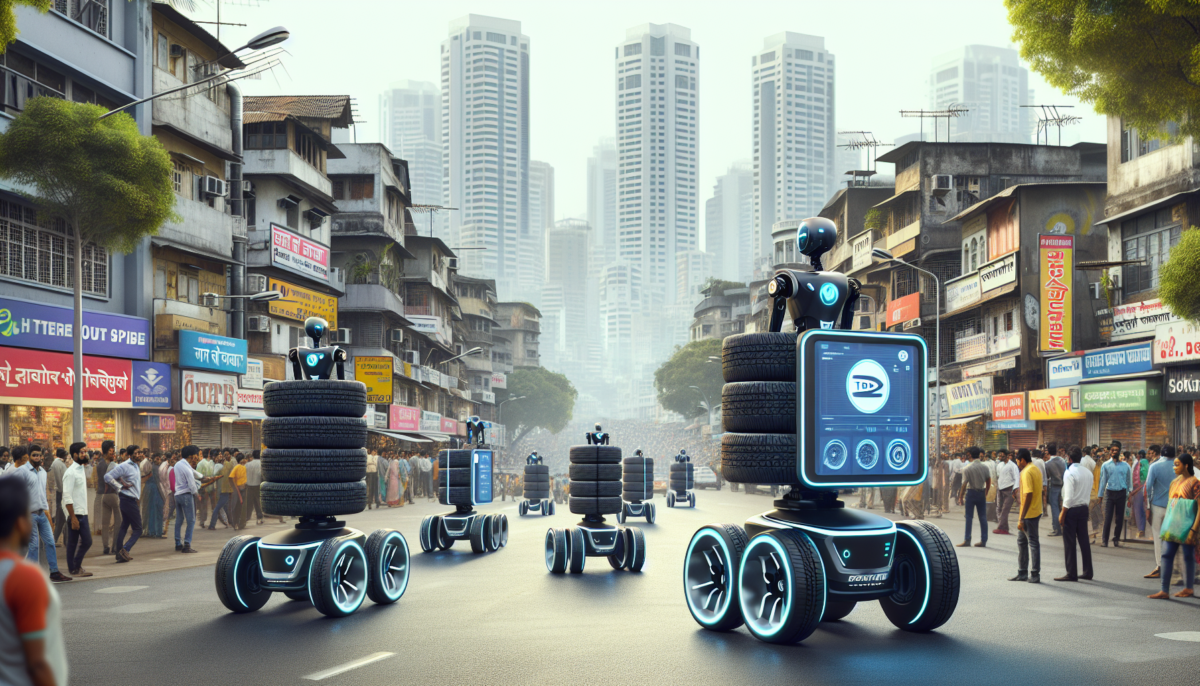CEAT Tyres Introduces Self-Operating Robots for Tyre Deliveries in Mumbai
We independently review everything we recommend. When you buy through our links, we may earn a commission which is paid directly to our Australia-based writers, editors, and support staff. Thank you for your support!

Brief Overview
- CEAT Tyres has introduced autonomous robots to move tyres inside its manufacturing facility in Mumbai.
- The robot, named AMR 50 by Virya.ai, operates on AI technology and can manage payloads of up to 5,000kg.
- Equipped with 3D LiDAR, 2D LiDAR, IMU, and depth cameras, the robot possesses comprehensive 360-degree spatial awareness.
- It can reach a top speed of 11km/h and can manage slopes of up to 8%.
- This initiative signifies a pivotal advancement in the automation of industrial logistics within India’s manufacturing industry.
- Virya.ai, the Indian tech startup that created the AMR 50, comprises a small team of 11–50 employees.
- CEAT’s move towards automation reflects a worldwide trend extending beyond the US and China in the realm of autonomous vehicle innovation.
Transforming Tyre Production with AI-Driven Robots
In a remarkable advancement towards intelligent manufacturing, CEAT Tyres has begun implementing autonomous mobile robots (AMRs) for tyre transportation at its Mumbai site. This represents a significant leap in the company’s automation strategy, aligning with a rising trend where manufacturers leverage robotics to enhance operational efficiency and lower labor costs in industrial settings.
Producing more than 140,000 tyres daily across six different plants, CEAT caters to leading automotive brands such as BMW, Mercedes, Audi, Kia, and Volvo. As productivity and accuracy become increasingly essential, the adoption of robotic technology is a natural progression for optimizing internal logistics.
Introducing the AMR 50: India’s Industrial Autonomy Solution
At the forefront of this change is the AMR 50, an autonomous towing robot crafted by the Indian startup Virya.ai. This sturdy machine is engineered to tow loads of up to 5,000 kilograms while efficiently navigating the dynamics of a busy manufacturing setting with minimal need for human oversight.
With a maximum velocity of 11km/h and the capability to traverse slopes of up to 8%, the AMR 50 is designed for both strength and adaptability. It is powered by a 300Ah battery, which can sustain around 3,000 charge cycles, rendering it a cost-effective and environmentally friendly choice for prolonged industrial application.

High-Tech Sensing for Secure Navigation
A standout characteristic of the AMR 50 is its state-of-the-art perception capabilities. It integrates 3D LiDAR, 2D LiDAR, a 6-axis Inertial Measurement Unit (IMU), and a depth camera to form a comprehensive 360-degree, real-time awareness of its environment.
This advanced sensory framework enables the robot to autonomously recognize and avoid obstacles, guaranteeing safety for both the machine and human operators. It can dynamically adjust its trajectory based on ongoing environmental evaluations, a critical feature in fast-paced factory environments.
Small Team, Major Innovation: The Emergence of Virya.ai
Virya.ai, the driving force behind the AMR 50, operates as a compact startup in India, employing a workforce of merely 11–50 people as per LinkedIn. Nevertheless, this small entity has showcased exceptional innovation in autonomous robotics, taking on the larger US and Chinese tech giants in this field.
This development illustrates a wider trend: advanced autonomous vehicle technologies are increasingly emerging beyond Silicon Valley or Shenzhen. Emerging markets like India are becoming significant centres of innovation, providing scalable and relevant solutions to global industries.
Impact on the Manufacturing Industry
CEAT’s shift to automated logistics aligns with a global context where manufacturers are facing labor shortages, escalating costs, and a necessity for operational agility. By automating internal transport functions, companies can redirect human resources to more skilled roles, increase productivity, and diminish the likelihood of workplace injuries.
This transition might inspire other manufacturing leaders in Australia and the Asia-Pacific region to investigate similar AI-based automation strategies. As robotic costs decline and capabilities expand, barriers to entry are being lowered significantly.
Conclusion
CEAT Tyres has embraced the AMR 50 autonomous robot from Indian startup Virya.ai to optimize tyre deliveries at its Mumbai facility. This AI-driven system can carry 5,000 kg at speeds of 11 km/h while navigating intricate environments using advanced sensors. This action reflects a broader movement toward automation in manufacturing and emphasizes India’s expanding contribution to global autonomous vehicle innovation.
Q: What is the AMR 50 and who created it?
A:
The AMR 50 is an autonomous mobile robot designed by the Indian tech startup Virya.ai, intended for towing substantial loads of up to 5,000kg in industrial settings.
Q: How does this robot navigate its surroundings?
A:
The robot combines 3D LiDAR, 2D LiDAR, a 6-axis IMU, and a depth-sensing camera to generate a 360-degree awareness of its environment, enabling autonomous and safe navigation.
Q: What are the performance specifications of the AMR 50?
A:
The AMR 50 can transport up to 5,000kg, achieve velocities of up to 11km/h, and tackle gradients of up to 8%. Its 300Ah battery supports about 3,000 charge cycles.
Q: Why is CEAT utilizing autonomous robots?
A:
CEAT is employing autonomous robots to lower operational expenses, enhance efficiency, and improve safety within its tyre manufacturing facilities.
Q: Is this robot controlled remotely or does it operate fully autonomously?
A:
According to CEAT’s management, the AMR 50 functions independently using artificial intelligence, without any requirement for remote operation.
Q: What implications does this have for the global autonomous vehicle sector?
A:
This innovation highlights that advancements in autonomous vehicles are taking place on a global scale, extending beyond the US and China. Companies in emerging markets like India are also making impactful advancements.
Q: Could manufacturers in Australia benefit from similar technology?
A:
Certainly. Australian manufacturing sectors could adopt similar AMRs to enhance efficiency, safety, and scalability, especially in logistics-intensive fields such as automotive and mining.
